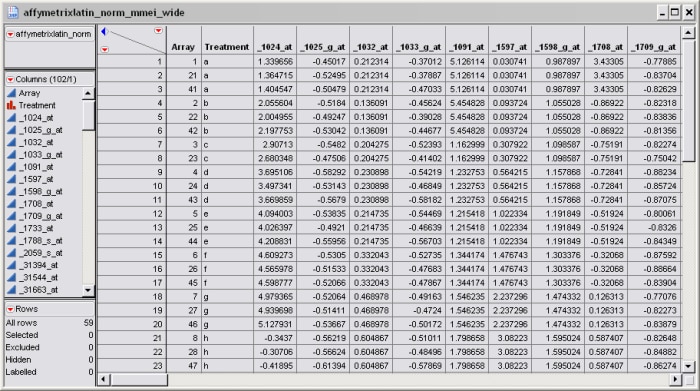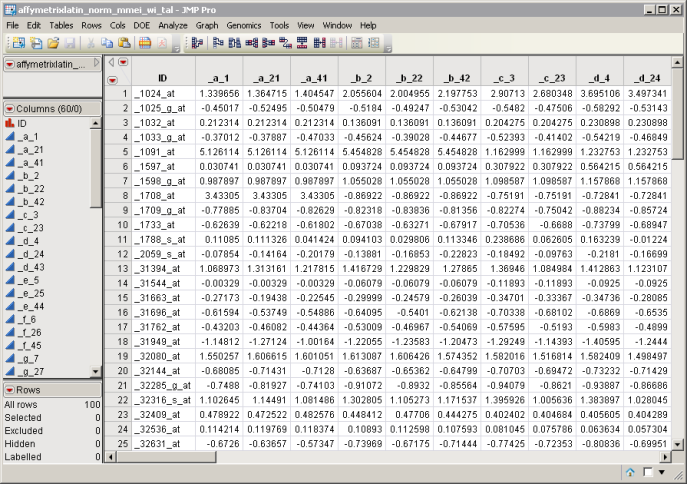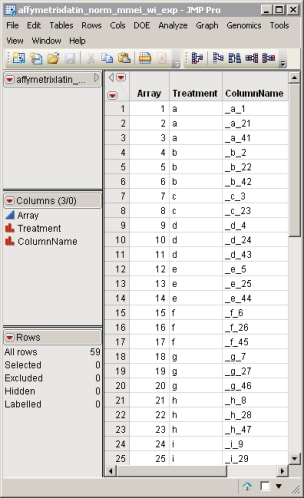Process Description
Transpose Wide to Tall
Most of the processes in JMP Genomics assume that the input SAS data set has a particular data structure. JMP Genomics distinguishes between tall and wide SAS data sets. A tall SAS data set has samples as columns, and molecular entity (such as marker, gene, clone, protein, or metabolite) as rows. A wide SAS data set is the transpose of a tall data set, having the samples as rows and molecular entity as columns. When specifying the input SAS data set for a process, it is important to know the required form. Most of the processes associated with genetic analyses require a wide structure, whereas most of those for microarray and proteomics analyses use a tall structure.
The Transpose Wide to Tall process transposes a SAS data set in wide format into a SAS data set in tall format, and generates an accompanying experimental design data set.
What do I need?
Only the wide Input Data Set to be transposed is required for transposing from the wide format to the tall format. The affymetrixlatin_norm_mmei_wide.sas7bdat data set (found in the \LifeSciences\Sample Data\Microarray\Affymetrix Latin Square directory included with JMP Genomics, and described in Affymetrix Latin Square Data) is shown below. This is a wide data set with probesets listed in 100 data columns and individual arrays listed in the 59 data rows.

For detailed information about the files and data sets used or created by JMP Genomics software, see Files and Data Sets.
Output/Results
The tall SAS data set and the Experimental Design Data Set (EDDS) generated by this process are listed in a Results dialog that is displayed in a new window.
| 8 | Click to view the affymetrixlatin_norm_mmei_wi_tal.sas7bdat output tall data set. |

The data has been transposed; there are now 59 data columns and 100 data rows. In addition, the _tal suffix has been appended to the transposed filename.
| 8 | Click to view the affymetrixlatin_norm_mmei_wi_exp.sas7bdat output EDDS. |

Specific information about array and treatment identification has been placed in the output EDDS.